Edible insects are great alternatives to conventional sources of meat as they’re cheap, plentiful and excellent sources of protein and fat, as well as vitamins and minerals.
In many countries, eating insects doesn’t raise eyebrows. How palatable they appear to a person is largely determined by culture.
Analyses of insects also show huge variation in nutritional value and composition - between species, their stages of development and even due to the insects’ diet.
With around 2000 edible insect species worldwide, those below are some of the better alternatives to eat.
Grasshoppers
Protein is the major component of insects, and grasshoppers, locusts and crickets (Orthoptera) stand out. Top protein providers are the grasshoppers known as chapulines in Mexico that have a protein content of up to 77.13%. And their protein values are many times higher than the plants the chapulines commonly feed on including corn, bean and alfalfa.
The collection of these grasshoppers from agricultural fields in favour of using pesticides would not only control them as pests and reduce soil and water contamination but also provide additional food and income.
Chapulines are usually eaten with guacamole and tortillas.
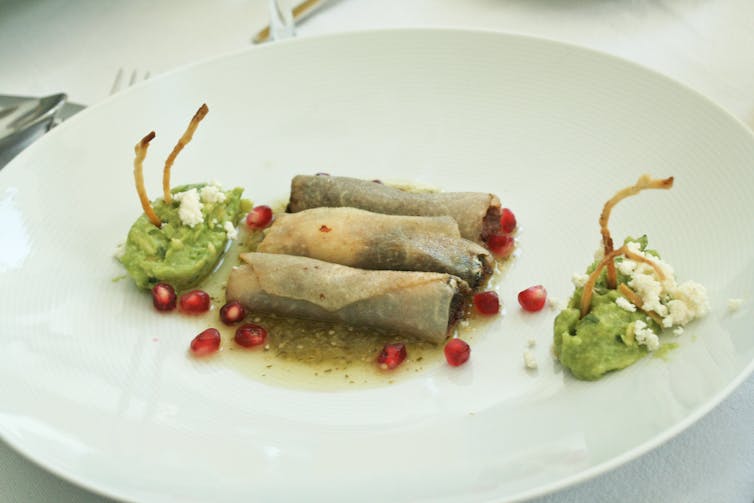
Palm grubs
These soft-bodied larvae of palm weevils (beetles) are widely consumed in the Americas (Rhynchophorus palmarum), south-east Asia (Rhynchophorus ferrugineus) and tropical Africa (Rhynchophorus phoenicis).
Larvae of the African palm weevil contain up to 69.78% fat. Because they are fried in their own fat, they don’t need any extra oil. But they’re also eaten raw.
Fat is the second major component of insects and constitutes the most energy-dense macronutrient in food.
Among the animal-based foods eaten by the Aché people of eastern Paraguay, these grubs are the best energy providers - even better than honey - and so palm grubs are like natural energy bars.
Unsaturated fatty acids (the good ones) are the ones also generally predominant in edible insects, and they also contain more polyunsaturated fatty acids (the really good ones) than poultry and fish. Rhynchophorus phoenicis is rich in these polyunsaturated fatty acids and also contains linoleic and α-linolenic acids - two essential fatty acids particularly important for the healthy development of children and babies.
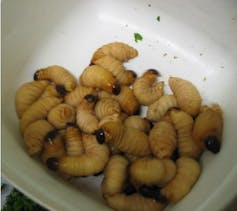
Some indigenous peoples in south-east Asia already semi-cultivate palm grubs - like the sago grub (Rhynchophorus ferrugineus), which feeds on the sago palm. They fell palm trees deliberately for the palm weevil larvae to grow, and between one to three months later up to 100 grubs can be found in a single trunk. Easier indoor cultivation has been developed in Thailand.
Descriptions of texture and taste of the sago grub include creamy when raw and sweet when fried.
Mopane worms (or caterpillars actually)
Most edible insects have equal or higher iron contents than beef, which has an iron content of 6mg per 100g of dry weight, while the iron content of the mopane capterpillar (Imbrasia belina), for example, is 31–77mg per 100g.
The mopane caterpillar is one of the most consumed and economically valuable edible insects in southern Africa and could go some way to improving iron deficiency in the diet.
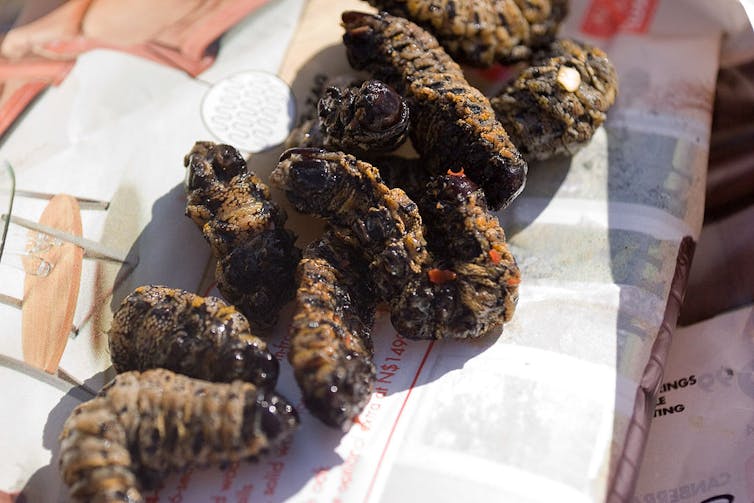
Iron deficiency is the world’s most common and widespread nutritional disorder according to the World Health Organisation. In developing countries, around a half of all pregnant women and about 40% of pre-school children are believed to be anaemic (anaemia can be caused by iron deficiency).
Attempts to semi-cultivate and domesticate the mopane caterpillar for food has had positive results but many issues remain before they can be more widely used, for example their susceptibility to viral and bacterial diseases.
Mealworms
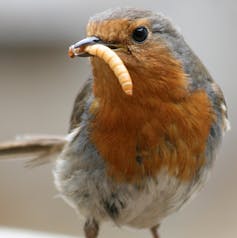
Mealworms are particularly interesting for western diets and mass-production. Their overall nutritional value is comparable to beef, they are endemic in temperate climates such as in Europe, and mass-rearing is already in place in the pet industry and for feeding birds.
Several companies that produce mealworms in the Netherlands are now using their knowledge and facilities to mass-rear mealworms for human food.
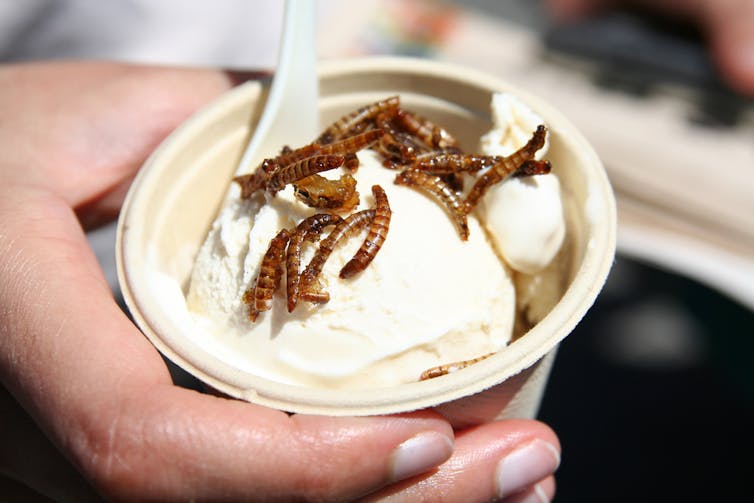
Importantly, the ecological footprint of mealworm production is much lower than that of beef, but also milk, chicken, and pork production. Although the production of mealworms requires similar amounts of energy, it has lower emissions of greenhouse gasses (for example less methane that you’d get in rearing cows) and requires much less land. Water use is also much lower.
Mealworms can easily be processed in foods. Preliminary results of experiments conducted at Wageningen University indicate that the texture and taste of processed foods that contain mealworms are very well accepted by western consumers.
Black soldier flies maggots
These flies are excellent both as human food and as animal feed.
Dried black soldier fly prepupae (maggots) contain 42% protein and 35% fat. Live prepupae consist of 44% dry matter and can easily be stored for long periods.
As a component of a complete diet, they have been found to support good growth in chicks, pigs, rainbow trout, channel catfish, and blue tilapia
When used as animal feed, the black soldier fly can also be reared on manure of poultry, pigs, and cattle which reduces manure mass, moisture content, offensive odours, and the pollution potential of manure by 50–60% (for example, chromium, copper, iron, lead, zinc), and can also reduce harmful bacteria such as E-coli and Salmonella.
Growing them is easy; either in the backyard and as one recent invention shows, also in the home.

